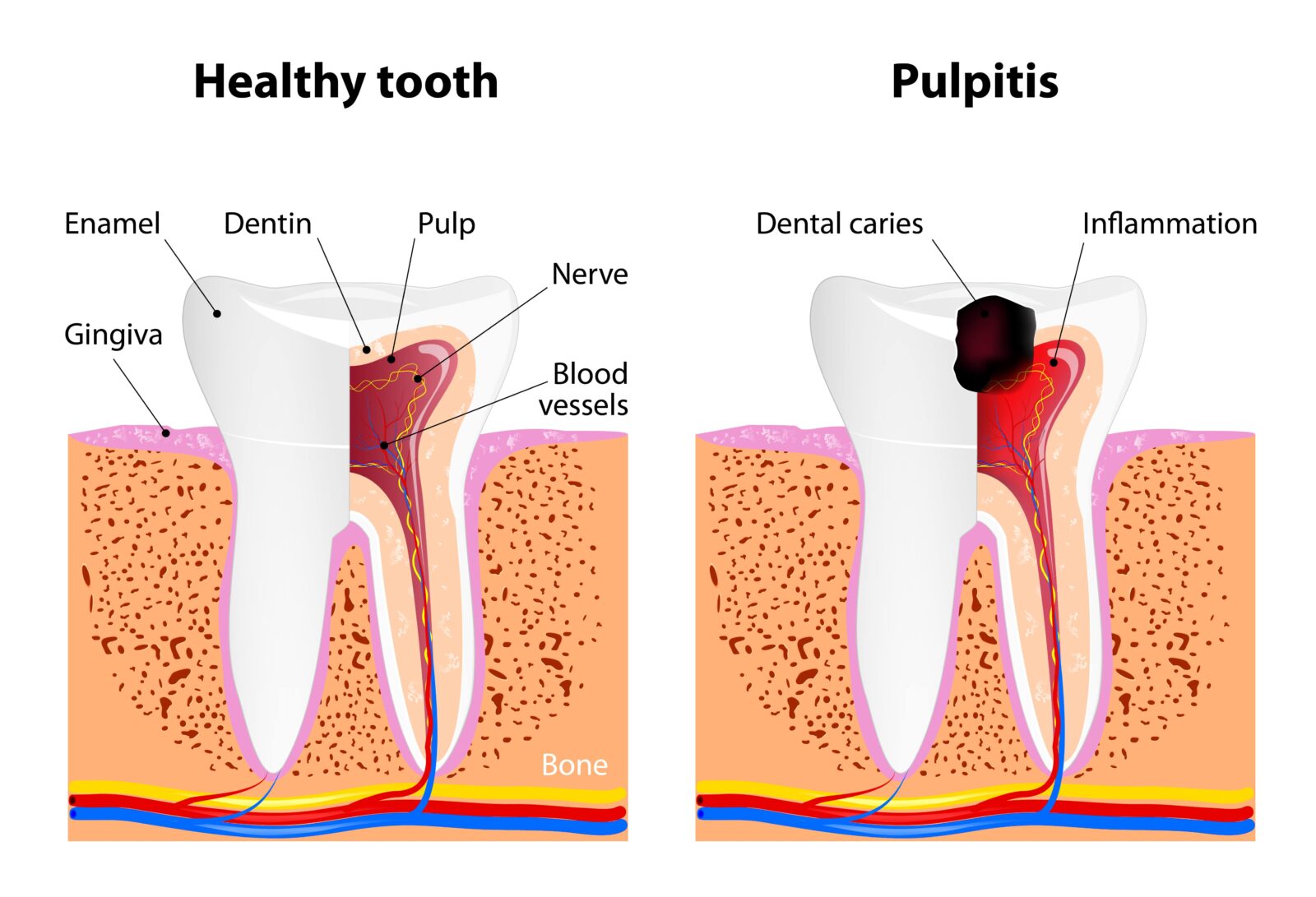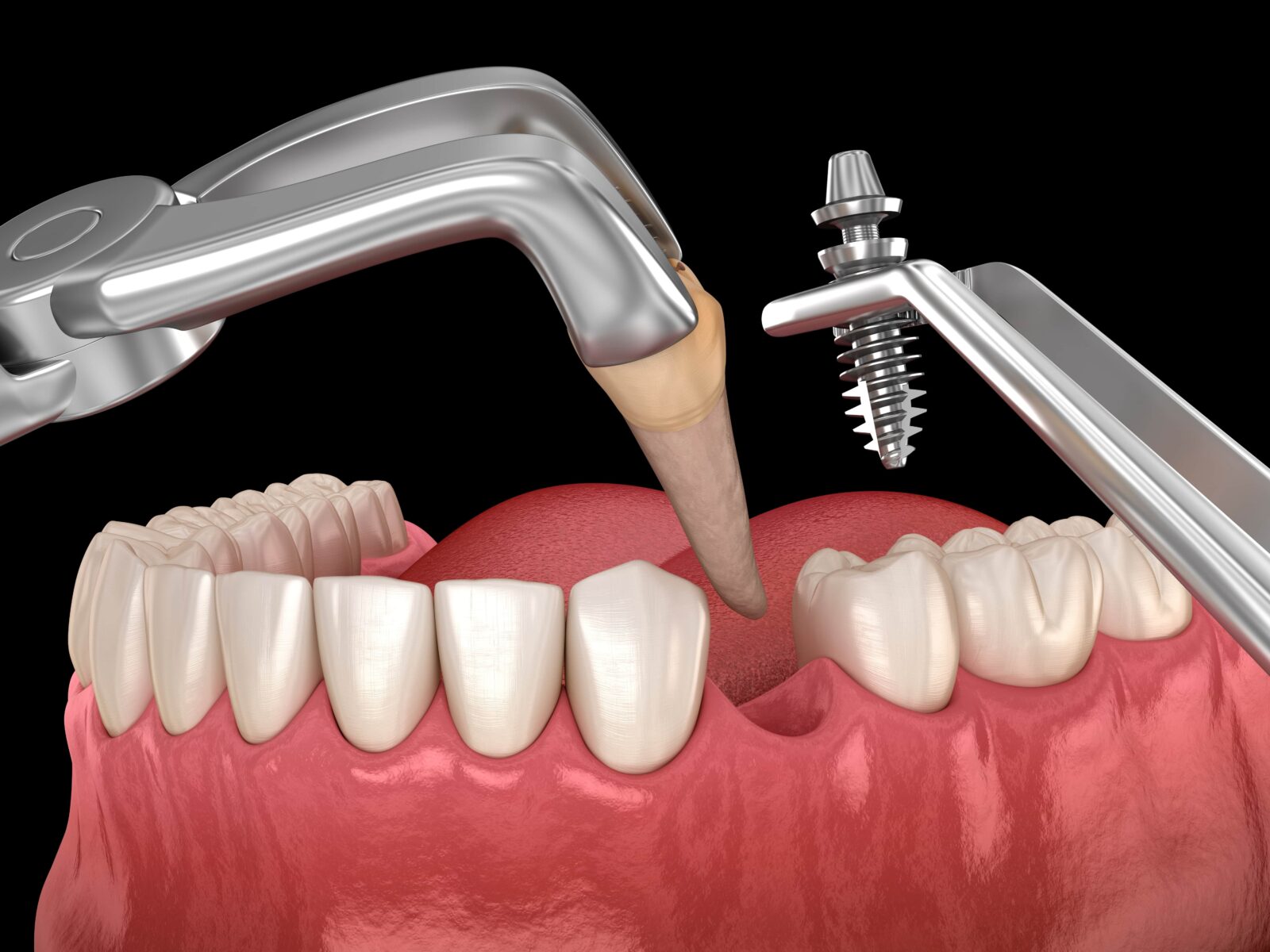Do you have a toothache that just won’t go away? You may be suffering from pulpitis, a common dental condition that can cause tooth pain and sensitivity. Left untreated, pulpitis can lead to more serious dental problems. In this blog post, we will discuss the two most common treatments for pulpitis: root canal therapy and dental implants. We will define each option, explain how the treatment works, and compare when one option may be more beneficial than the other. So don’t suffer any longer! Read on to learn more about the top treatments for pulpitis.
What is pulpitis?
Pulpitis is the inflammation of the pulp, or soft tissue, inside your tooth. The pulp contains blood vessels, nerves, and connective tissue. Pulpitis can occur when the tooth’s enamel is damaged or decayed, allowing bacteria to enter the pulp chamber and cause an infection. Symptoms of pulpitis include:

- tooth pain
- sensitivity to hot and cold temperatures
- swelling around the tooth
- tenderness when biting or chewing
- discharge around the gums
- discolored tooth
- bad taste or smell
The most common causes of pulpitis are tooth decay and dental trauma. Tooth decay can occur when bacteria in the mouth break down the enamel of the tooth. This can cause the dentin, or inner layer of the tooth, to become exposed. Dentin is more sensitive to pain and temperature than enamel, so you may experience tooth pain and sensitivity when the dentin is exposed. Dental trauma can occur when you fall and hit your teeth, or when you get a blow to the face. This can damage the pulp inside the tooth and cause pulpitis.
Pulpitis is a serious infection that can cause a range of complications when not treated. If the infection spreads beyond the pulp and into the surrounding bone, it can lead to a condition called apical periodontitis. Apical periodontitis is a serious inflammation of the tissue around the root of your tooth. If left untreated, apical periodontitis can cause an abscess, or pus-filled pocket, to form around the tooth. This can lead to severe pain, bone loss, and tooth loss.
Treatments for Pulpitis
Since pulpitis can cause additional complications if not treated, there are two very effective ways to treat this condition. Both treatments physically remove the infection to prevent it from spreading, however they do so in different ways. Let’s take a look at each treatment:
Root Canal Therapy

Root canal therapy is a common treatment for pulpitis. During this procedure, the dentist will drill into the tooth to remove the infected pulp from the inside of the pulp chamber and root canals. Then, they will clean the inside of your tooth before filling the space with a rubbery material called gutta-percha. Once the tooth is filled, the dentist will place a crown over it to protect it from further damage. Root canal therapy is an effective way to treat pulpitis and can save your tooth from extraction. Since this method preserves your natural tooth, it is generally the preferred option. However, there is always the risk that root canal therapy can fail.
Dental Implants

Dental implants are another common treatment for pulpitis. This procedure involves removing the entire infected tooth and then surgically placing a metal post in the empty space. Once the post has bonded with the jawbone, a replacement tooth is attached to it. Dental implants look and function just like your natural teeth. They are a great option for those who have lost a tooth due to pulpitis or another condition. They can also be used in cases where the infection is too severe to be treated with a root canal, the tooth has become loose, or when prior root canals have failed. Removing the tooth is the only for sure way to remove the infection.
Which Treatment Option Is Right for Me?
Both root canal therapy and dental implants are effective treatments for pulpitis. The best option for you will depend on the severity of your infection. Mild to moderate infections can usually be treated adequately with root canal therapy. However, severe infections that have caused abscesses may not be able to be treated adequately with a root canal and extraction may be recommended. This is also the case if the affected tooth is too damaged to restore with a dental crown. Ultimately, however, only your dentist can determine which treatment is right for you.
In Conclusion
In this blog post, we have defined pulpitis and discussed the top treatments for pulpitis. Finally, we have compared root canal therapy and dental implants to help you decide which treatment is right for you. Don’t suffer from tooth pain any longer! If you think you may have pulpitis, be sure to schedule an appointment with your dentist right away. They will be able to diagnose the condition and recommend the best treatment option for you.
